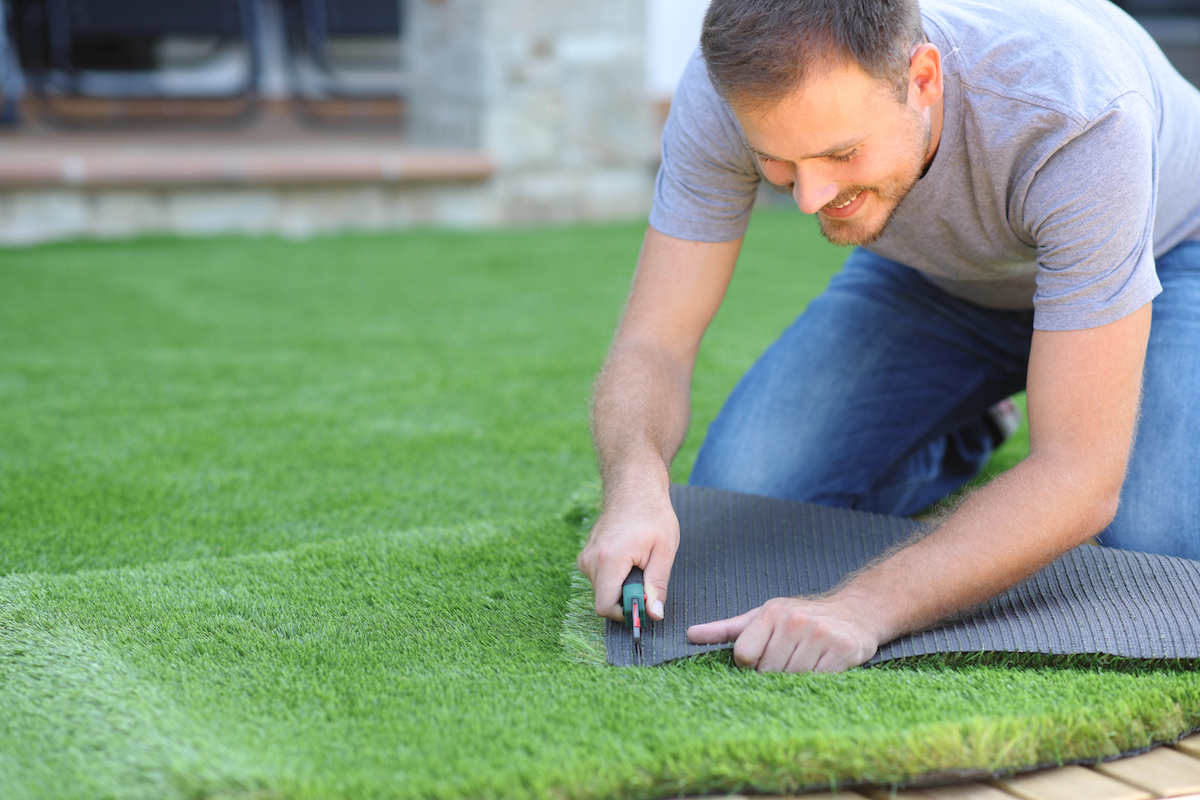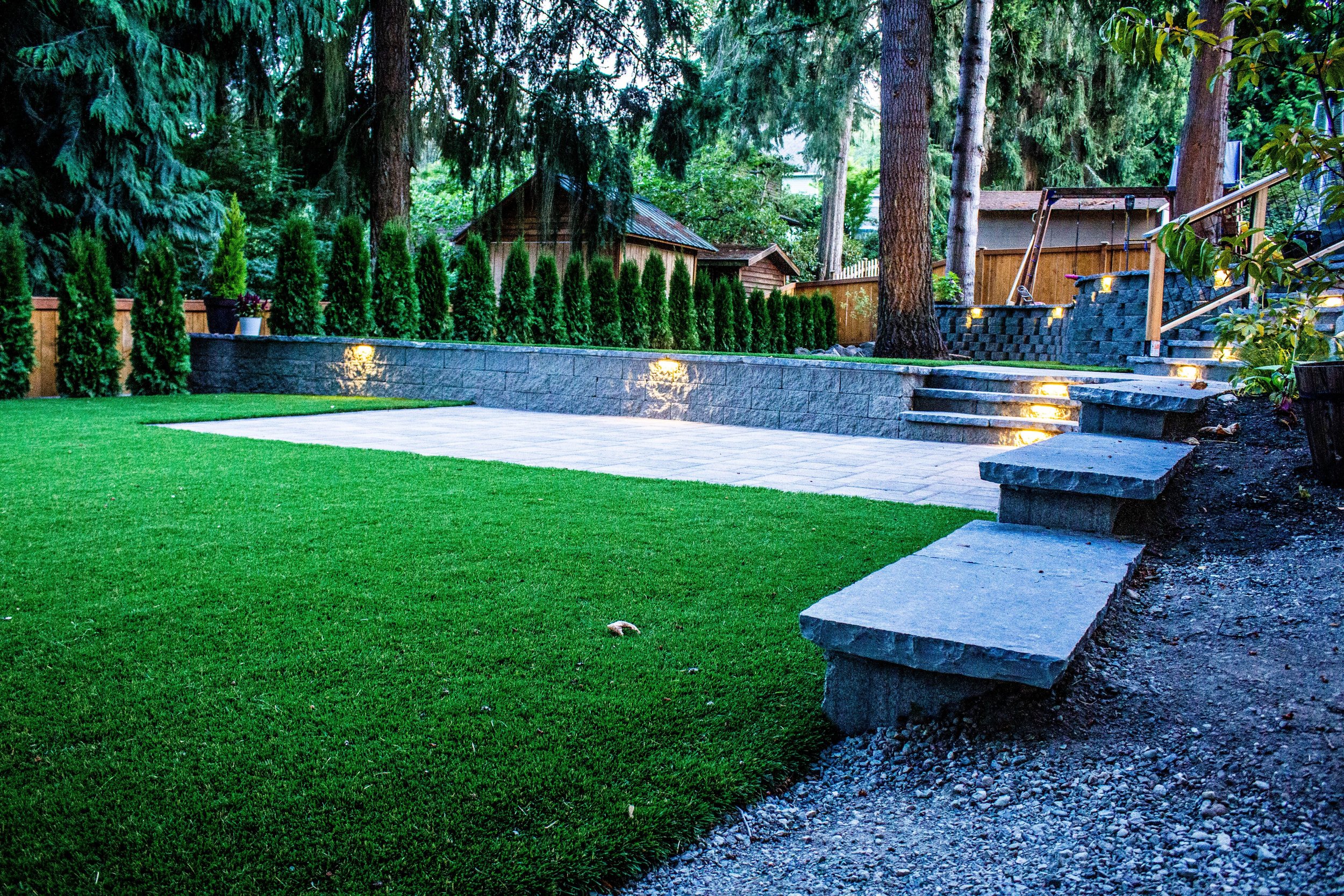Look Into the Environmental Conveniences of Opting for Artificial Turf Solutions
The adoption of synthetic turf solutions offers a compelling chance to address pressing ecological obstacles. By considerably minimizing water usage and lessening the application of hazardous chemicals, these alternatives not just promote sustainable landscape design yet also safeguard local ecosystems.
Water Preservation Perks
One of the most substantial benefits of synthetic lawn is its capability to preserve water. In contrast, synthetic lawn does not require watering, significantly lowering the total need for water sources.
By eliminating the requirement for normal watering, synthetic grass adds to sustainable landscape practices and helps minimize the ecological influence of excessive water intake. The conservation of water expands to the decrease of drainage, which can lead to soil disintegration and waterway pollution.
Furthermore, the installment of artificial grass enables homeowners and municipalities to allot water resources extra successfully, concentrating on necessary uses such as drinking water and agriculture. The shift towards synthetic grass not just advertises liable water usage yet additionally straightens with broader ecological goals targeted at protecting all-natural sources.
As neighborhoods progressively focus on sustainability, the water conservation advantages of synthetic grass provide an engaging case for its adoption in commercial and domestic landscaping jobs.
Decreased Chemical Use
The shift to synthetic lawn dramatically reduces the reliance on chemical treatments frequently made use of in natural grass upkeep. Typical lawn administration commonly includes the application of herbicides, pesticides, and fertilizers to advertise development and control parasites. These chemicals can posture dangers to human wellness, local wild animals, and the environment, contributing to dirt and water contamination.
In comparison, fabricated lawn gets rid of the demand for these unsafe compounds. By minimizing the launch of artificial substances right into the environment, man-made lawn advertises much healthier dirt and water systems.
Moreover, the absence of chemical runoff associated with synthetic grass setups helps safeguard local rivers from contamination, supporting water life and maintaining biodiversity. Arizona turf. As neighborhoods increasingly prioritize lasting methods, choosing synthetic grass presents a practical service that lines up with environmental conservation goals. Via this shift, property proprietors can enjoy lavish environment-friendly areas without compromising ecological health and wellness, leading the way for a more lasting future
Lower Carbon Impact

Additionally, the installment of fabricated grass can lead to considerable water preservation. All-natural yards need substantial quantities of water for irrigation, which not only contributes to the carbon footprint related to water removal and treatment yet likewise strains local water sources. In contrast, synthetic grass requires marginal maintenance, calling for no watering, thereby significantly decreasing water usage and its associated power prices.
In addition, the durability of synthetic grass adds to its decreased carbon influence. With a lifespan of approximately 15 years or even more, the demand for frequent substitutes is lessened, resulting in less waste and lower energy usage in manufacturing and getting rid of traditional grass options. Overall, artificial grass offers a lasting choice for ecologically conscious landscape design.
Environment Conservation
Environment preservation is a critical factor to consider in the dispute over landscaping options, especially when comparing synthetic grass to all-natural turf. Natural turf yards frequently call for substantial maintenance, including making use of plant foods, herbicides, and chemicals, which can adversely affect regional environments. These chemicals can leach into the soil and rivers, hurting native flora and animals and interrupting neighborhood habitats.
Synthetic lawn gets rid of the need for unsafe chemicals, thus shielding close-by wildlife and preserving the honesty of bordering environments. The installment of man-made lawn can lead to the conversion of former yard locations right into even more biodiverse landscapes, such as pollinator yards or indigenous plant locations, which can support neighborhood wild animals.
Inevitably, the shift to artificial turf not just conserves water and minimizes upkeep efforts however additionally cultivates a much why not find out more more harmonious partnership between human tasks and the natural surroundings, advertising environment preservation while doing so.
Long-Term Sustainability
Lasting sustainability is a critical consider evaluating the benefits of synthetic grass over standard grass yards. Among the most significant benefits of synthetic grass is its toughness; it can last up to 15-20 years with very little upkeep, whereas natural turf calls for regular reseeding and replacement. This longevity lowers the need for consistent resources, such as water, plant foods, and pesticides, which are important for preserving a healthy and balanced turf lawn.
Furthermore, synthetic grass adds to a decrease in carbon exhausts connected with yard care tools. Conventional yards commonly require gas-powered lawn mowers, trimmers, and blowers, all of which contribute to air pollution. Phoenix turf companies. In contrast, man-made grass eliminates the need for such equipment, promoting a cleaner setting
In addition, the manufacturing of synthetic grass significantly utilizes recycled materials, enhancing its sustainability account. As go to this website makers take on eco-friendly techniques, the environmental footprint of synthetic grass proceeds to lessen.

Verdict
The adoption of synthetic grass services provides substantial environmental benefits, consisting of substantial water preservation, lowered dependence on harmful chemicals, and a reduced carbon footprint. Fabricated grass aids in preserving natural environments by lessening land disruption and promoting long-term sustainability with the usage of sturdy materials. Collectively, these variables underscore the potential of synthetic turf to add positively to ecological health and provide a practical choice to standard landscaping techniques in a significantly resource-conscious world.
In comparison, man-made turf does not require watering, significantly minimizing the overall demand for water sources. By reducing the launch of synthetic substances right into the ecosystem, fabricated grass advertises much healthier dirt and water systems.
Furthermore, the installation of man-made lawn can result in significant water preservation. In comparison, man-made turf requires very little upkeep, requiring no watering, thus dramatically decreasing water use and its connected power costs.
